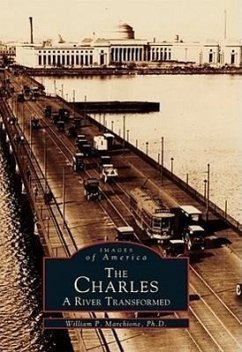From the Colonia era through the industrial age and into modern times, the Charles River has been a prominent feature of the New England landscape and has undergone a series of dramatice changes. First the site of important Revolutionary battles, the Charles later became home to myriad commercial interests, including lumberyards, slaughterhouses, arsenals, and businesses. The Charles has long been the location of three prominent universities, but only recently has the river come to serve as a recreational and scenic haven for residents and visitors of Boston, Cambridge, Brookline, Watertown, and Newton. The 1970s landmark Clean Water Act did much to transform this much-used waterway into a lovely and popular spot for walking, jogging, cycling, boating, sailing, rowing, picnicking, swimming, fishing, and even windsurfing.
Bitte wählen Sie Ihr Anliegen aus.
Rechnungen
Retourenschein anfordern
Bestellstatus
Storno

